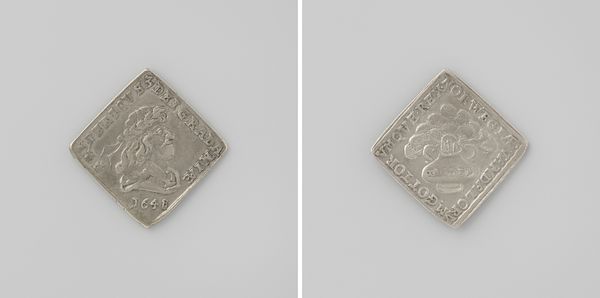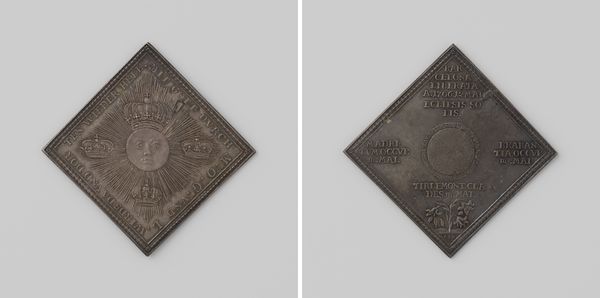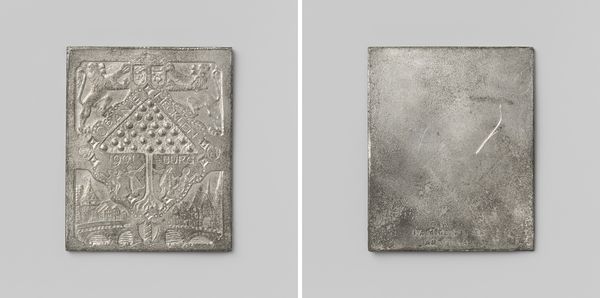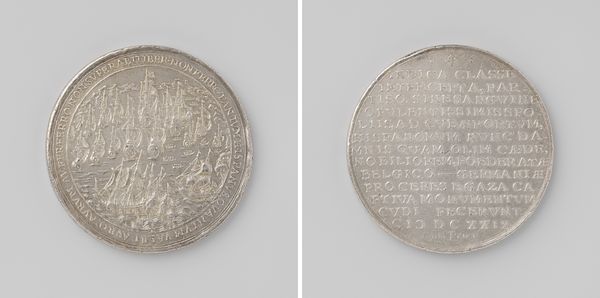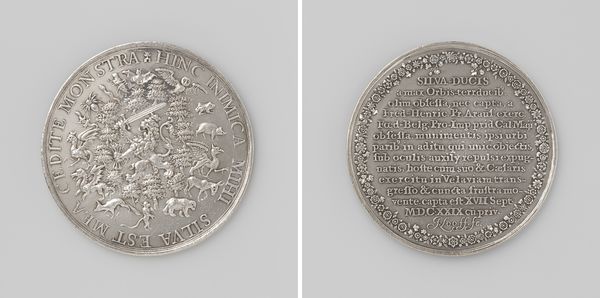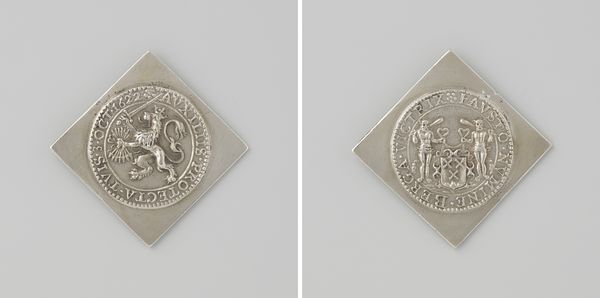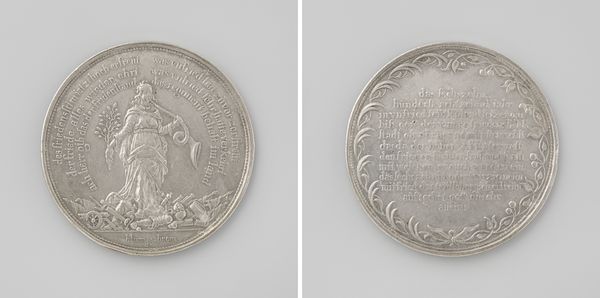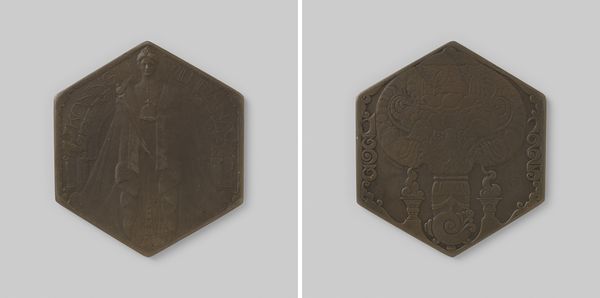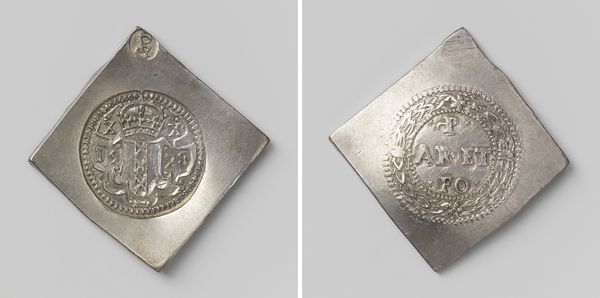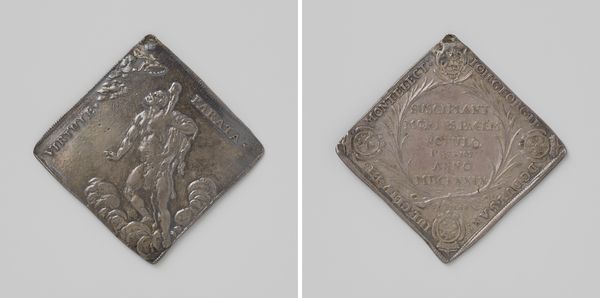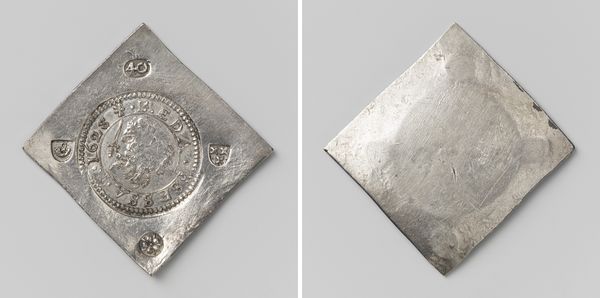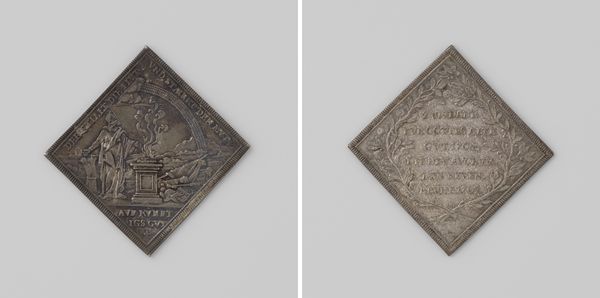
Karel III koning van Spanje en vervulling van het luchtvisioen van de beide vechtende jongelingen uit 1536 1706
0:00
0:00
metal, relief, sculpture, engraving
#
baroque
#
metal
#
relief
#
figuration
#
sculpture
#
history-painting
#
engraving
Dimensions: length 5.4 cm, width 5.3 cm, weight 14.90 gr
Copyright: Rijks Museum: Open Domain
Curator: This intriguing metal relief, dating from 1706, is titled "Karel III koning van Spanje en vervulling van het luchtvisioen van de beide vechtende jongelingen uit 1536." The level of detail for something engraved in metal is incredible! What are your first impressions? Editor: I'm struck by how much information they pack into a small space. You have the central figure, almost angelic, and then this detailed text… What can you tell me about its purpose? Curator: Well, as a materialist, I immediately consider the context of its production. Metal reliefs like this weren’t “art” in the modern sense but rather tools of power. Consider the material: metal, durable, valuable, capable of being reproduced. How does the choice of metal reflect the wealth and ambition of its commissioner? Editor: It suggests permanence, like they wanted the message to last! Curator: Exactly. Think about the labor involved in creating such a detailed engraving. Skilled artisans, carefully shaping the metal according to a design, for a political purpose. It’s a physical manifestation of ideology, a means of shaping public opinion, almost like propaganda of the day. What statements does that production process make? Editor: The amount of work really signifies importance... this wasn't something dashed off quickly, but rather an assertion meant to solidify King Charles III's image. And the relief, the way the metal is raised, emphasizes its permanence and validity. Curator: Precisely! It bridges art and craft, high ideals and grounded labour, all to consolidate power. Understanding how these objects were made, who made them, and why reveals so much about the societies that produced them. Editor: So, by analyzing the metal, the labor, we understand the political intentions… very interesting. Thank you! Curator: A materialist lens allows us a grounded understanding of even seemingly ethereal art!
Comments
No comments
Be the first to comment and join the conversation on the ultimate creative platform.
